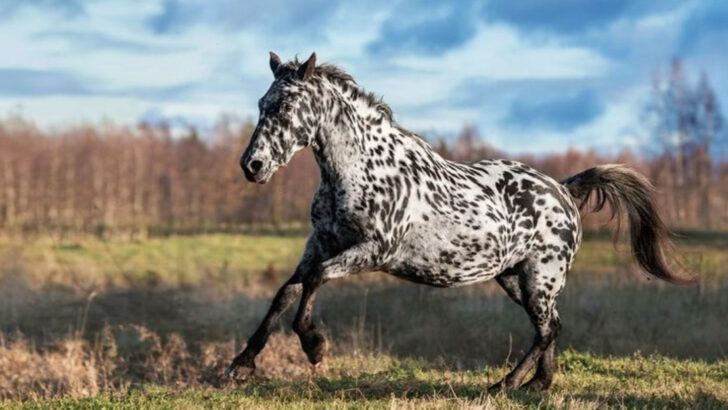Some horses don’t just turn heads—they leave jaws on the floor.
Blotches like ink splashes, stripes that don’t follow the rules, spots that look like constellations—these aren’t your everyday equine coats.
They’re the masterpieces of genetics gone a little wild.
Behind every striking pattern is a twist in the DNA, a roll of the chromosomal dice that says,
“This horse? Yeah, we’re making it unforgettable.”
From leopard-spotted showstoppers to pintos with lightning bolts down their sides, these horses aren’t just unique.
They’re genetic wonders—living art with hooves.
Ready to meet the 14 most visually fascinating breeds?
Let’s pull back the curtain on nature’s flashiest designs—and the secrets they hide under the surface.
Appaloosa

An Appaloosa’s coat is a canvas of captivating spots. These spots aren’t just for show; they trace back to ancient genetics tied to leopard complex spotting. This breed’s coat can display patterns ranging from blanket to leopard. Each pattern is unique, like a fingerprint.
The Appaloosa’s striking appearance is coupled with an equally vibrant personality. Known for their versatility, they excel in a variety of equestrian activities. Did you know? The Nez Perce tribe, who originally bred these horses, valued them for their endurance and agility.
Gypsy Vanner
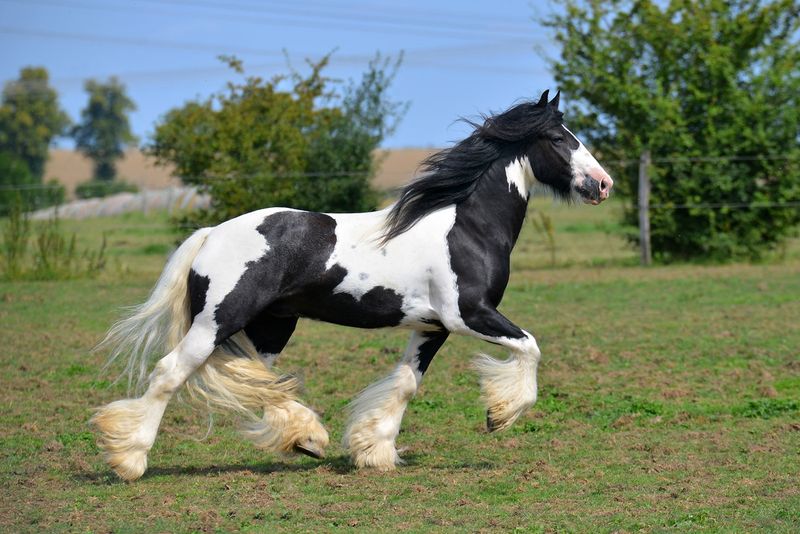
The Gypsy Vanner’s piebald or skewbald coat is a masterpiece of genetic artistry. This breed is renowned for its feathered legs and luxurious mane, which add to its visual appeal. These horses were bred by the Romani people to pull caravans, which explains their strength and gentle nature.
Their coats, usually black and white or brown and white, are distinctive and eye-catching. The genetic diversity within the breed ensures each horse’s markings are as individual as a fingerprint, making them a favorite for shows and parades.
Knabstrupper
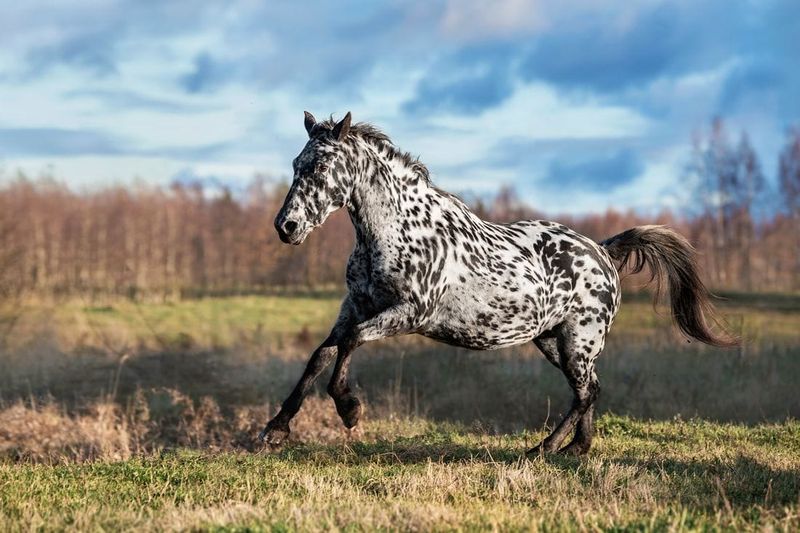
Knabstruppers are known for their eye-catching leopard spotted coats, similar to the Appaloosa. Their markings are more than just aesthetics; they are a testament to genetic diversity and health.
Originating from Denmark, this breed is famous for its unique coloring and its prowess in dressage and jumping. Historically, they were prized by nobility for their distinct and regal appearance, making them a symbol of status and elegance. Today, Knabstruppers are celebrated for their friendly demeanor and artistic coat patterns.
Icelandic Horse
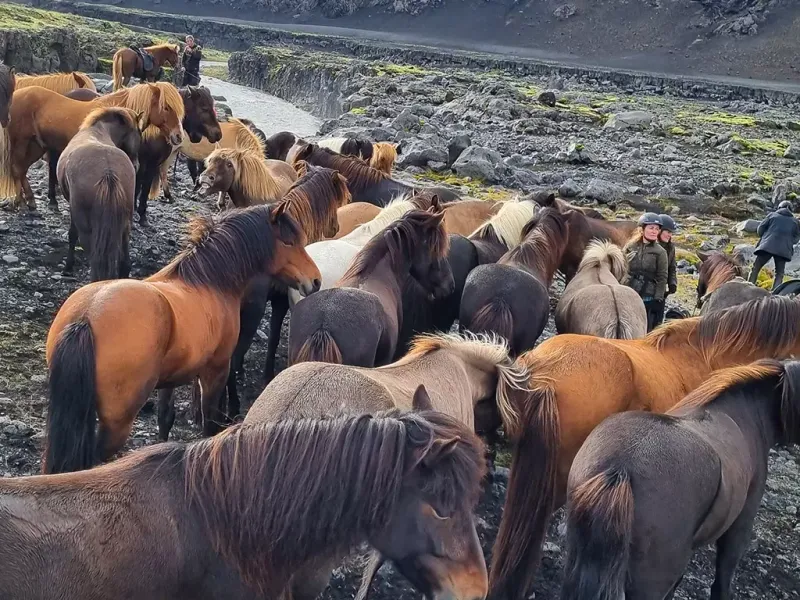
The Icelandic Horse, with its hardy build and unique markings, is a genetic marvel. One of its notable markings is the dorsal stripe, a dark line running along its back, reminiscent of ancient horse breeds.
Apart from markings, this breed is celebrated for its five gaits, including the smooth tölt. Icelandic horses have a rich history, tied closely to Norse mythology. Their markings, like the dorsal stripe, are not only beautiful but also a nod to their resilient nature and adaptability to Iceland’s rugged landscapes.
Thoroughbred
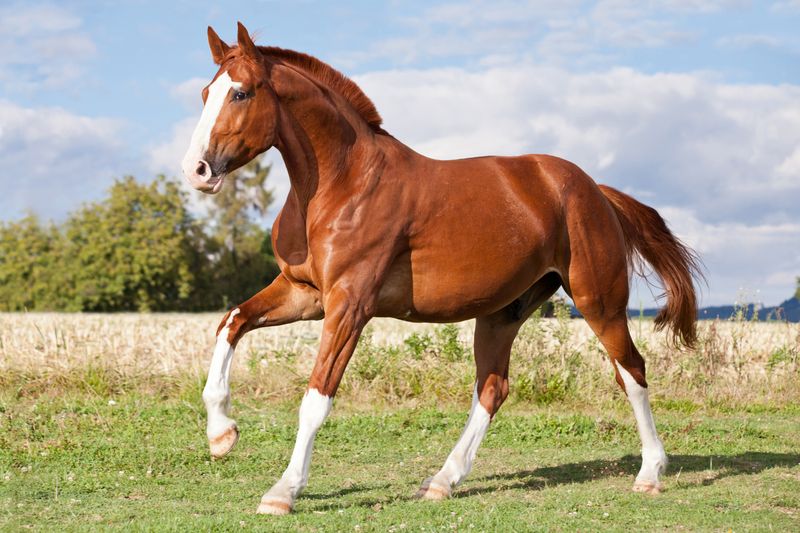
Renowned for speed and agility, Thoroughbreds also showcase fascinating genetic markings. Their sleek bodies often display white socks and a blaze, adding to their elegant appearance.
These markings, while common, can signify lineage and breeding quality. Thoroughbreds are bred predominantly for racing, and their markings often become part of their identity on the track. These horses not only run fast but also carry the legacy of their ancestors, visible in the unique white patterns adorning their legs and face.
Friesian
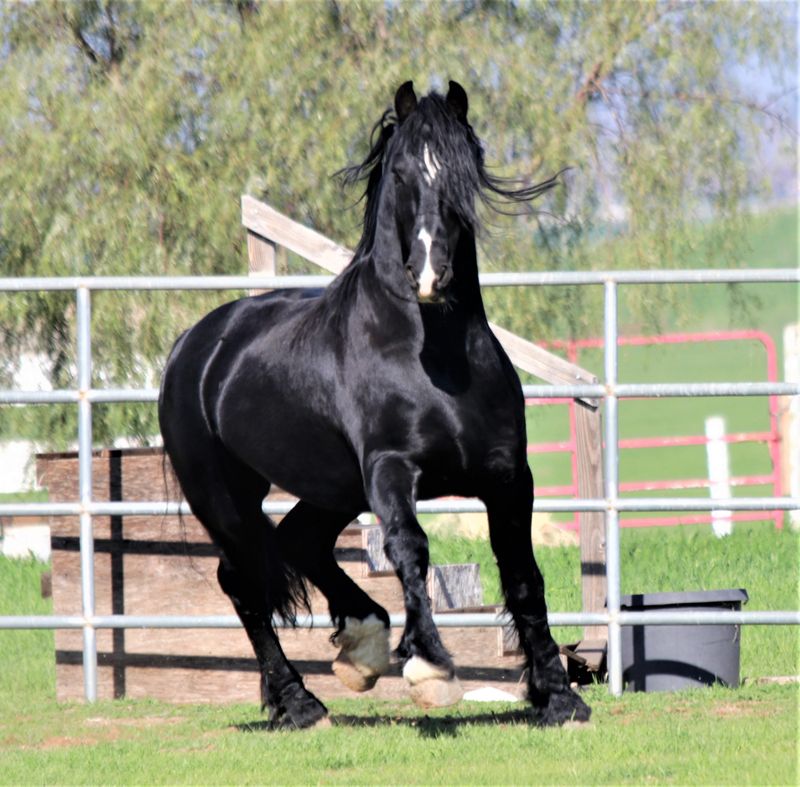
Friesians are the epitome of elegance with their all-black coats and occasional star markings on their foreheads. These markings, though subtle, highlight their noble lineage and add to their mystique.
Originating from the Netherlands, Friesians are known for their powerful build and graceful movements, often seen in dressage and driving competitions. The star marking, a simple yet striking feature, reflects the breed’s purity and ancient heritage. Despite their formidable presence, Friesians are gentle giants with a calm demeanor.
Paint Horse
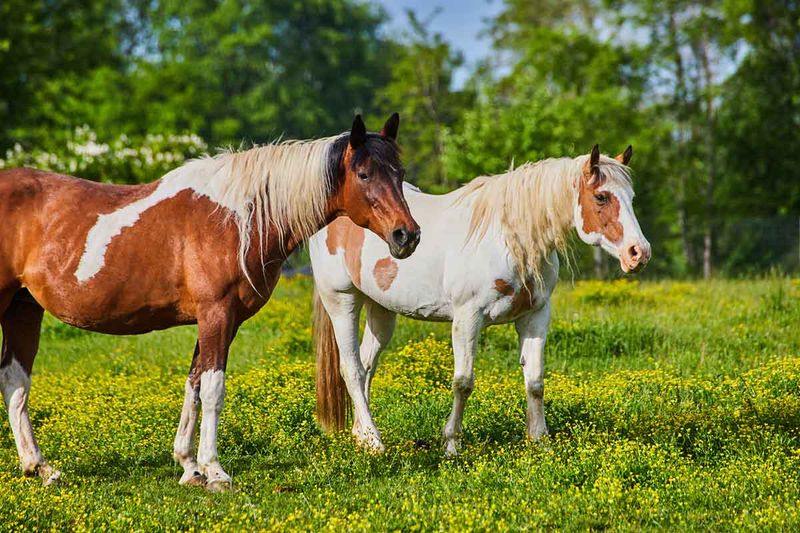
Paint Horses are a canvas of colors with their striking overo and tobiano patterns. Each horse is a unique masterpiece, showcasing a combination of white and colored patches that are as varied as an artist’s palette.
These markings are not just for show; they are linked to the breed’s Pinto ancestry and genetics. Known for their friendly disposition and versatility, Paint Horses excel in western disciplines and are beloved for their colorful, expressive coats. These horses bring a splash of color to any setting, turning heads wherever they go.
Akhal-Teke

The Akhal-Teke is famed for its metallic sheen, a result of unique hair structure that refracts light. This “golden horse” hails from Turkmenistan and is among the oldest horse breeds.
Their coats can appear gold, silver, or bronze, giving them an otherworldly glow. This shimmering effect is more than just a pretty sight; it’s a genetic adaptation for camouflage in desert landscapes. Beyond their beauty, Akhal-Tekes are known for their endurance and agility, traits honed over centuries in harsh environments.
Marwari
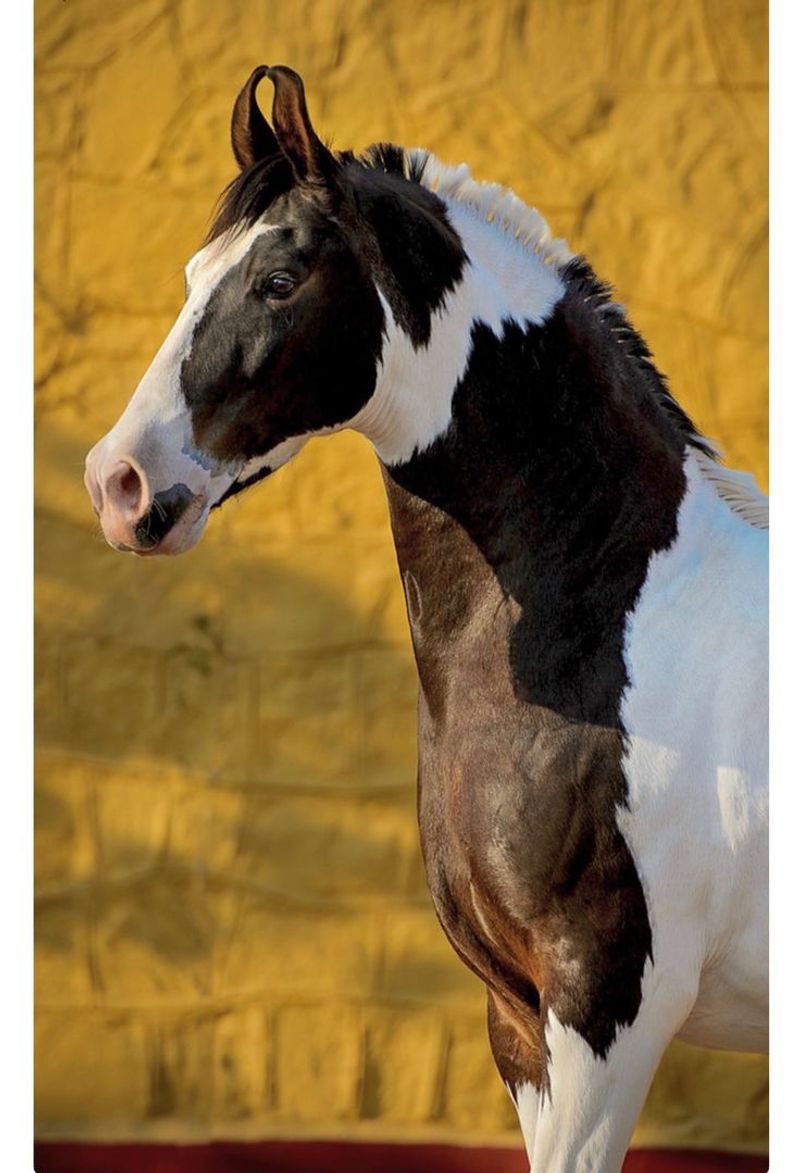
Marwari horses are distinguished by their uniquely curved ears and sabino spotting. These markings are not just ornamental; they signify the breed’s rich Indian heritage and resilience.
The sabino pattern, with its white splashes on the coat, is linked to genetic diversity and health. Marwaris are prized for their endurance, agility, and striking appearance. Historically used by Indian royalty, these horses symbolize bravery and nobility, making them a cultural icon and a testament to the art of horse breeding in India.
Lipizzaner
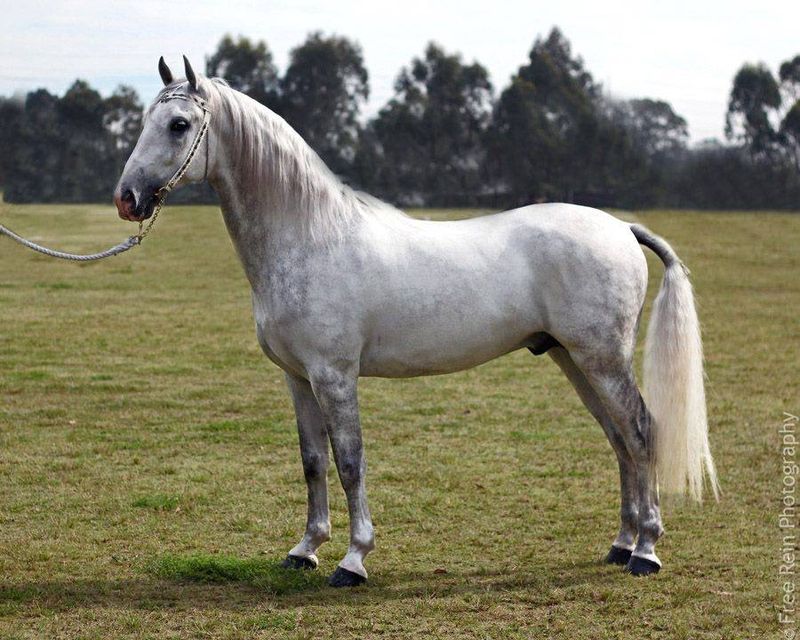
Lipizzaners, known for their classical dressage performances, often start with a dark coat that turns dapple gray as they mature. This transformation is a genetic marvel, showcasing the beauty of nature’s paintbrush.
Their coats and movements are a tribute to centuries of selective breeding by the Habsburg monarchy. Lipizzaners are symbols of grace and discipline, captivating audiences with their precise movements and dramatic coat changes. Their markings, though subtle, tell a story of elegance and history intertwined.
Falabella
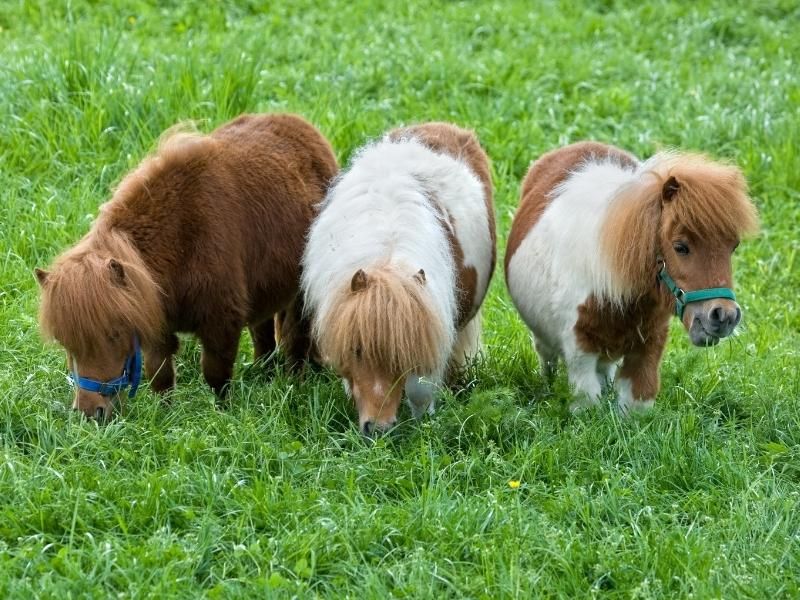
The Falabella, one of the smallest horse breeds, charms with its petite size and pinto patterns. These miniature horses carry a mosaic of colors, thanks to their Pintaloosa genetics, combining both Pintos and Appaloosas.
Despite their size, Falabellas pack a punch with personality and unique coats. These horses are not just pets; they are cherished for their aesthetic appeal and gentle nature. Their striking patterned coats are a delightful testament to genetic artistry, making them beloved companions and stars in miniature horse shows.
Clydesdale
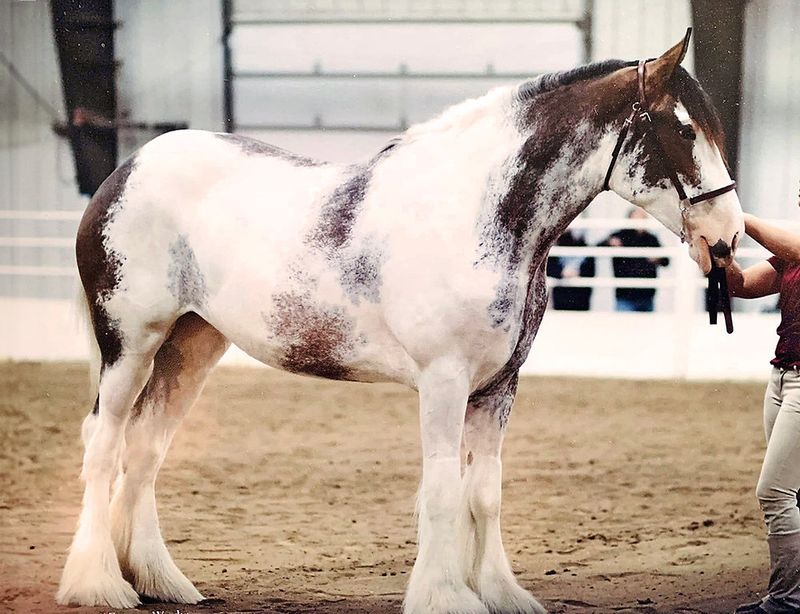
Clydesdales are magnificent draft horses, known for their feathered legs and sabino patterns. These markings are more than just decorative; they reflect a lineage of strength and work ethic.
The sabino pattern, with its white patches, adds to their imposing presence. Originally bred for heavy farm work, Clydesdales are now popular in parades and commercials, embodying grace and power. Their markings and stature make them easily recognizable icons, revered for their contribution to agriculture and commerce.
Shire

Shire horses, the gentle giants of the equine world, carry their heritage with pride through prominent blazes and feathered feet. These markings are a nod to their history as powerful draft horses.
Their massive build is complemented by calm and steady demeanor, making them ideal for heavy labor. The blaze is a striking feature, symbolizing purity and strength. Shires are celebrated for their contribution to farming and transport, and their markings tell stories of a time when they were the backbone of agriculture.
Tennessee Walking Horse
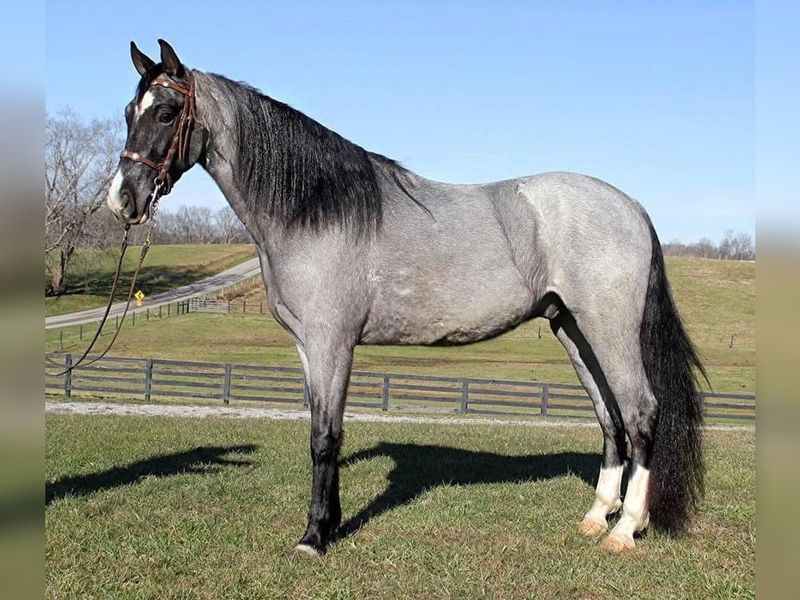
Tennessee Walking Horses are famous for their smooth gait and eye-catching roan coats. These coats, with a mix of colored and white hairs, create a mesmerizing effect that changes with the seasons.
Their genetic legacy includes a natural overstride and calm disposition, making them popular for trail riding and shows. The roan pattern, often combined with a blaze or socks, adds to their visual appeal. These horses represent a blend of beauty and functionality, captivating riders with their elegance and gentle ride.

